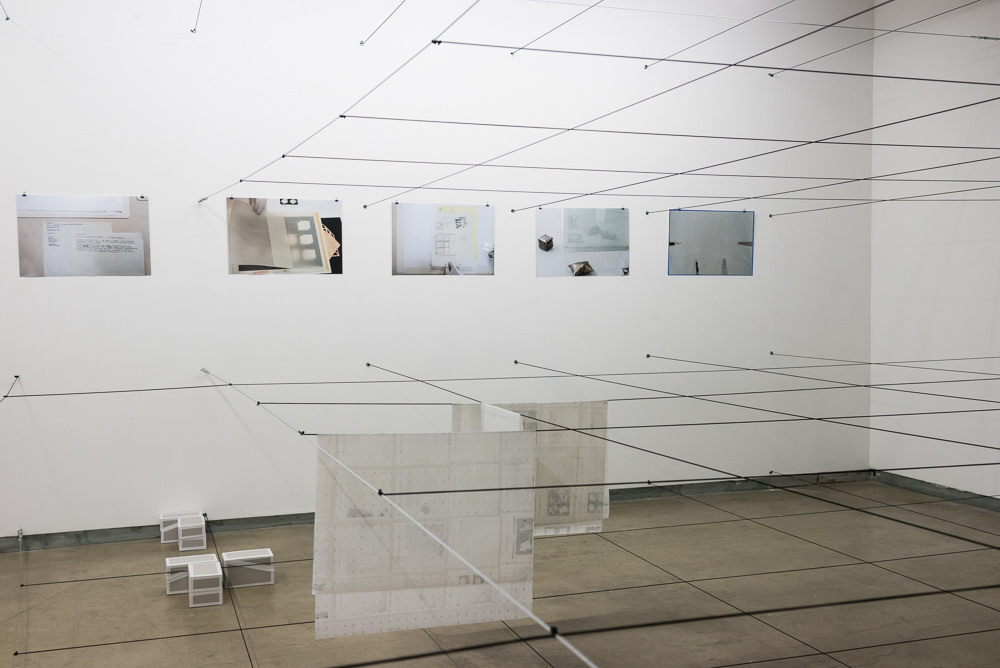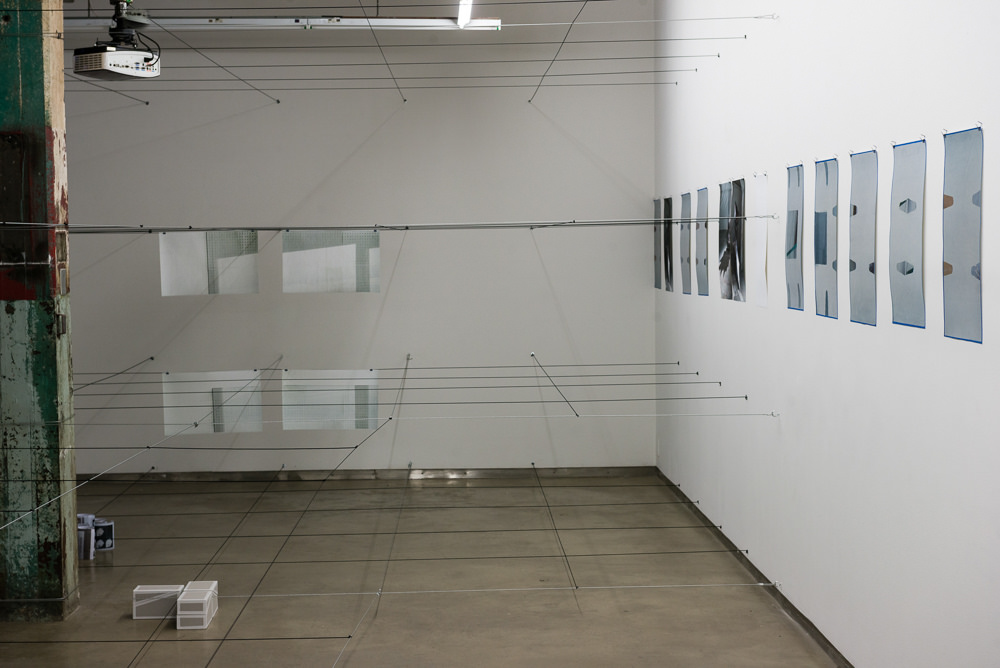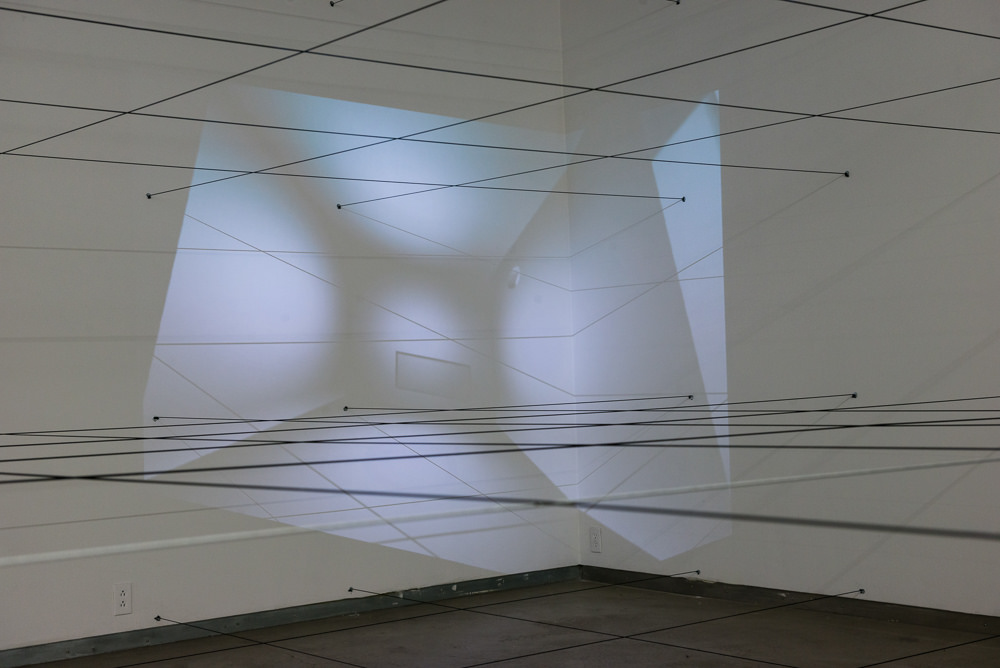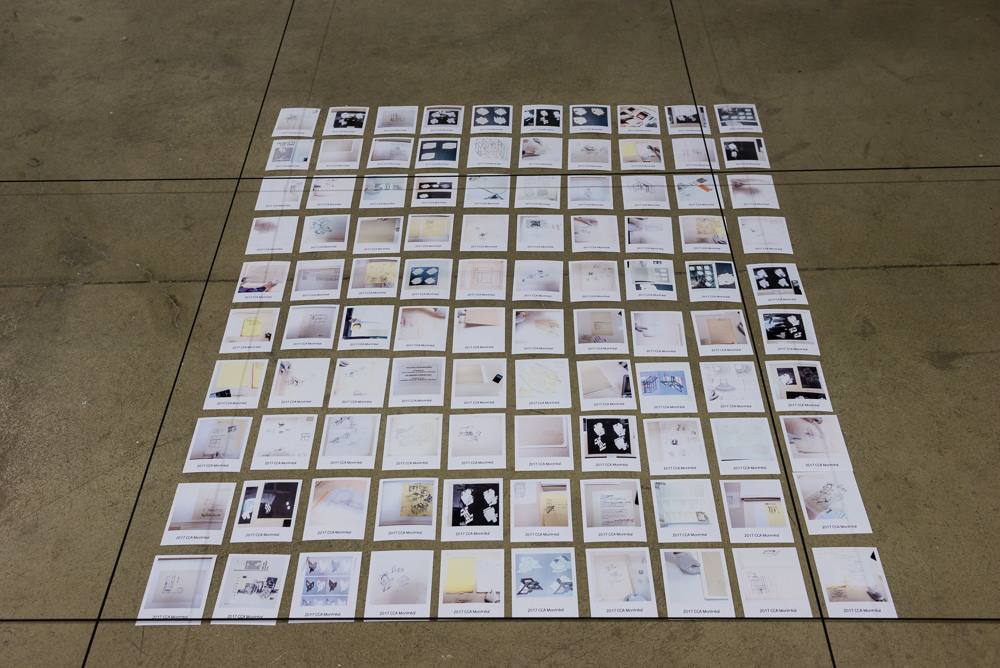The House of Dust by Alison Knowles
INHABITED BY BIRDS AND FISH
Aurélie Pétrel, (Studies) EARLY MODEL, 2017
30 inkjet prints, 40x60cm 100 inkjet prints, 6x7cm 1 fragmented print,1,60mx67. Hypercube, 2002, 1 video,14mins, 3 sound recordings,14mins
Aurélie Pétrel questions the status of the photographic image, its production processes, and its activation in different contexts. She produces what she calls “latent pictures,” and presents them in different states, often in installations, highlighting the processes of interpretation and transformation to which they are subjected. In this sense, her work reflects different operations of translation at work in The House of Dust. For this exhibition, Pétrel presents her research on the work of architect Peter Eisenman, whose practice has a connection with the foundations of her own art practice. Eisenman’s architectural perspective also relates in a similar way to Alison Knowles’ The House of Dust, and it is this connection that Pétrel draws on in this work. In his «Houses» series, which he began in the same year as Knowles’ poem was produced, Eisenman subjects a raw form, usually a square or cube, to conceptual manipulations or transformations (shifts, division into sections, superimpositions, and so on). Through this process he founds an architectural syntax and, by provoking a constant redefinition of architectural elements placed in different relations, reveals the gap between a form and its significance (in linguistic terms, the “floating signifier”). Like Knowles, Eisenman thus establishes a link between language and architecture and makes visible the migration of forms and their transformation in different contexts. However, while Eisenman is guided by a conceptual and rational logic that excludes human beings, unpredictability, and embodiment, Knowles’ work is exactly the opposite: she introduces chance, organic shapes, and open participation by different communities. Pétrel’s installation manifests precisely this tension, through an interpretation of documents found in Eisenman’s archives. In counterpoint with Eisenman’s grid Pétrel interposes photographs, which, through their organic and shifting imagery, continuously renegotiate their own uncertain status. Aurélie Pétrel thanks the Canadian Centre for Architecture and Emmanuelle Chiappone-Piriou for their support.



